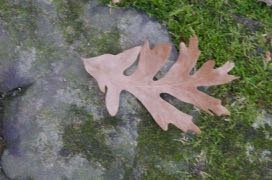white oak
white oak (Quercus Alba)
Description:
White oak is the iconic species of the open oak woodland community that once dominated large areas of southwestern Wisconsin. It is at home in mesic and dry mesic prairie settings, as well.
white oak
| USDA Symbol: | Common Name: | Scientific Name: |
|---|---|---|
| QUAL | white oak | Quercus alba |
ITIS TSN: 19290
Category: Dicot
Taxonomy
Kingdom: Plantae
Subkingdom:
Super Division: Spermatophyta
Division: Magnoliophyta
Subdivision:
Class: Magnoliopsida
SubClass: Hamamelididae
Order: Fagales
Family: Fagaceae
Counties: Adams, Ashland, Brown, Buffalo, Burnett, Calumet, Chippewa, Clark, Columbia, Crawford, Dane, Dodge, Door, Dunn, Eau Claire, Fond du Lac, Forest, Grant, Green, Green Lake, Iowa, Jackson, Jefferson, Juneau, Kenosha, La Crosse, Lafayette, Manitowoc, Marathon, Marinette, Marquette, Milwaukee, Monroe, Oconto, Outagamie, Pepin, Pierce, Polk, Portage, Racine, Richland, Rock, Rusk, Sauk, Sawyer, Shawano, Sheboygan, St. Croix, Taylor, Trempealeau, Vernon, Vilas, Walworth, Washburn, Washington, Waukesha, Waupaca, Waushara, Winnebago, Wood
| Duration: | Growth Habit: | Native Status: |
|---|---|---|
| Perennial | Tree | L48(N)CAN(N) |
| NR40 Listed Plant | Noxious Weed: | Invasive Species (NR40): | Threatened/Endangered: | WI Natural Heritage Index: | Wetland Status |
|---|---|---|---|---|---|
| Native | FACU |
Active Growth Period: Spring and Summer
Bloat: None
Carbon to Nitrogen Ratio: High
Coppice Potential: Yes
Conspicuous Fall Color: Yes
Fire Resistant: No
Flower Color: Yellow
Conspicuous Flower: No
Foliage Color: Green
Foliage Light Porosity Summer: Dense
Foliage Porosity Winter: Porous
Foliage Texture: Medium
Fruit/Seed Color: Brown
Growth Form: Single Stem
Growth Rate: Slow
Height at Base Age (Max): 25
Height at Maturity: 100
Known Alelopath: No
Leaf Retention: No
Lifespan: Long
Re-sproutability: Yes
Shape and Orientation: Erect
Toxicity: None
Height (min):
Height (max):
Root Type:
Leaf Type:
Leaf Arrangement:
Leaf Shape:
Vein Pattern:
Adapted to Coarse Textured Soils: Yes
Adapted to Medium Textured Soils: Yes
Adapted to Fine Textured Soils: No
CaCO3 Tolerance: Medium
Cold Stratification Required: No
Drought Tolerance: Medium
_Fire Tolerance: Medium
Hedge Tolerance: None
Moisture Use: Medium
pH (Minimum): 4.5
pH (Maximum): 6.8
Planting Density per Acre, Minimum: 300
Planting Density per Acre, Maximum: 800
Precipitation (Minimum): 30
Precipitation (Maximum): 80
Root Depth, Minimum (inches): 48
Salinity Tolerance: Medium
Shade Tolerance: Intermediate
Temperature, Minimum (°F): -43
Plant Spacing (min):
Plant Spacing (max):
| Bloom Period: | Commercial Availability: | Fruit/Seed Abundance: |
|---|---|---|
| Mid Spring | Routinely Available | High |
| Fruit/Seed Period Begin: | Fruit/Seed Period End: | Fruit/Seed Persistence: |
|---|---|---|
| Summer | Fall | No |
| Propogated by Bare Root: | Propogated by Bulbs: | Propogated by Container: |
|---|---|---|
| Yes | No | Yes |
| Propogated by Corms: | Propogated by Cuttings: | Propogated by Seed: |
|---|---|---|
| No | No | Yes |
| Propogated by Sod: | Propogated by Sprigs: | Propogated by Tubers: |
|---|---|---|
| No | No | No |
| Seeds per Pound: | Seed Spread Rate: | Seedling Vigor: |
|---|---|---|
| 128 | Slow | High |
| Small Grain: | Vegetative Spread Rate: | Propagation Treatment: |
|---|---|---|
| No | None |
| Days to Stratify: | Direct Sowing Time: |
|---|---|
Benefits:
| Berry/Nut/Seed Product: | Christmas Tree Product: | Fodder Product: |
|---|---|---|
| No | No | No |
| Fuelwood Product: | Lumber Product: | Naval Store Product: |
|---|---|---|
| High | Yes | Yes |
| Nursery Stock Product: | Palatable Browse Animal: | Palatable Graze Animal: |
|---|---|---|
| Yes | Medium | -- |
| Palatable Human: | Post Product: | Protein Potential: |
|---|---|---|
| No | No | Medium |
| Pulpwood Product: | Veneer Product: |
|---|---|
| No | Yes |
| Benefits: | Wildlife Food Value: | Wildlife Cover Value: |
|---|---|---|
Propagation:
Native Plant Network – Bare Root (field grown)
Native Plant Network – Seed (plug)
References:
- Fire Effects Information System (FEIS) Review – Quercus alba
- FEIS Fire Regime – Quercus alba
- iNaturalist Database – Quercus alba
- Long-term changes in an oak forest’s woody understory and herb layer with repeated burning
- North American Plant Atlas (BONAP) – Quercus alba
- USDA Plants Database – Quercus alba
- WisFlora Database – Quercus alba
- World Plants Database – Quercus alba

